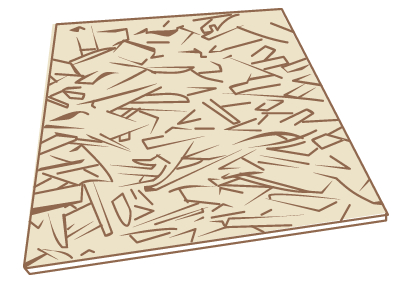What is oriented strand board?
Oriented strand board (OSB) is a building material made from shredded or flaked timber particles. OSB is often used for similar purposes as plywood or fibreboard. Its name is taken from the placement of the individual timber particles it is made from, which are aligned by a machine, and coated in resin and wax. Each layer is laid perpendicular to the previous in order to maximise the strength of the finished product. Once the desired thickness has been achieved, the strands are heated and pressed together to result in a board that is strong, thin, durable and flexible.

Why install oriented strand board?
Oriented strand board is a popular material for external wall sheathing. Exterior sheathing is the layer attached directly to wall studs which assists in keeping wall studs stable. OSB sheets used in this way will assist in maintaining the structural integrity of your home. Plywood was once the favoured material for sheathing, but for various reasons, OSB is now more popular. OSB and plywood are equally durable, while OSB is stronger, flatter, more uniform and less expensive.
When made from timber scraps or recycled wood, OSB is more environmentally friendly than plywood. Even when made from harvested timber, OSB tends to be the more environmentally friendly option. This is due to the small strips of wood it requires; young, fast growing timbers can be used, including pine and even bamboo.
OSB can be treated to make it resistant to water (although not to the extent where it is suitable for exteriors) as well as mould, fungi and insect infestation. Those cautious about using pesticides and fungicides in their home should inquire what their OSB has been treated with.
How is oriented strand board installed?
As previously mentioned, oriented strand board may be used to sheath the wall studs on a timber or metal frame. It is relatively simple to install, needing only to be correctly aligned and then drilled or screwed in to the wall studs. The board will be stamped with information which tells you whether the board should be hung vertically or horizontally to optimise its strength. Any cut edges need to be protected from moisture so that the board does not absorb water and swell.
|
Advantages
|
Disadvantages
|





